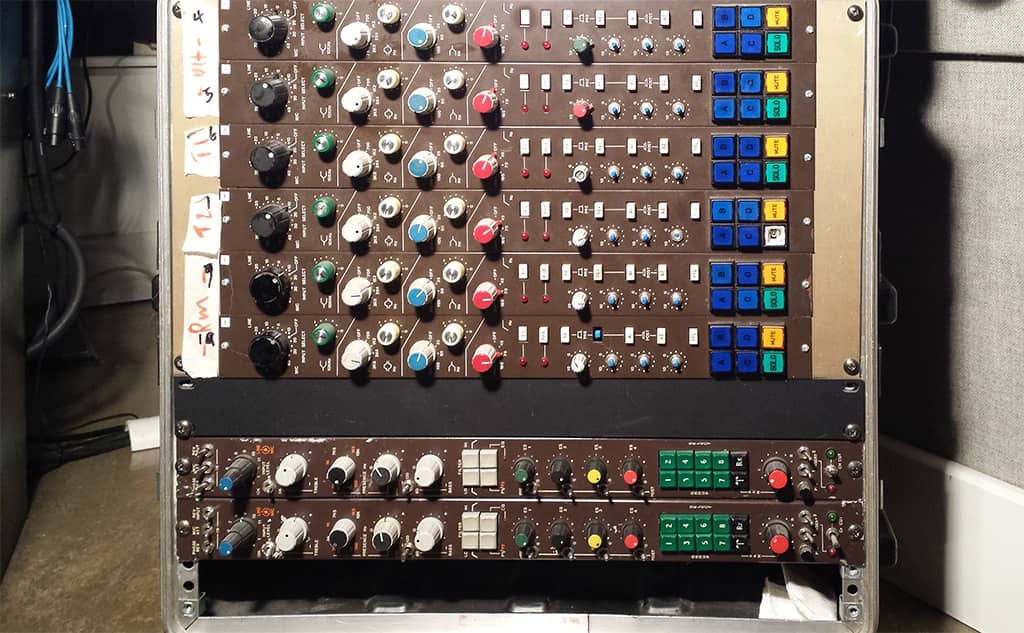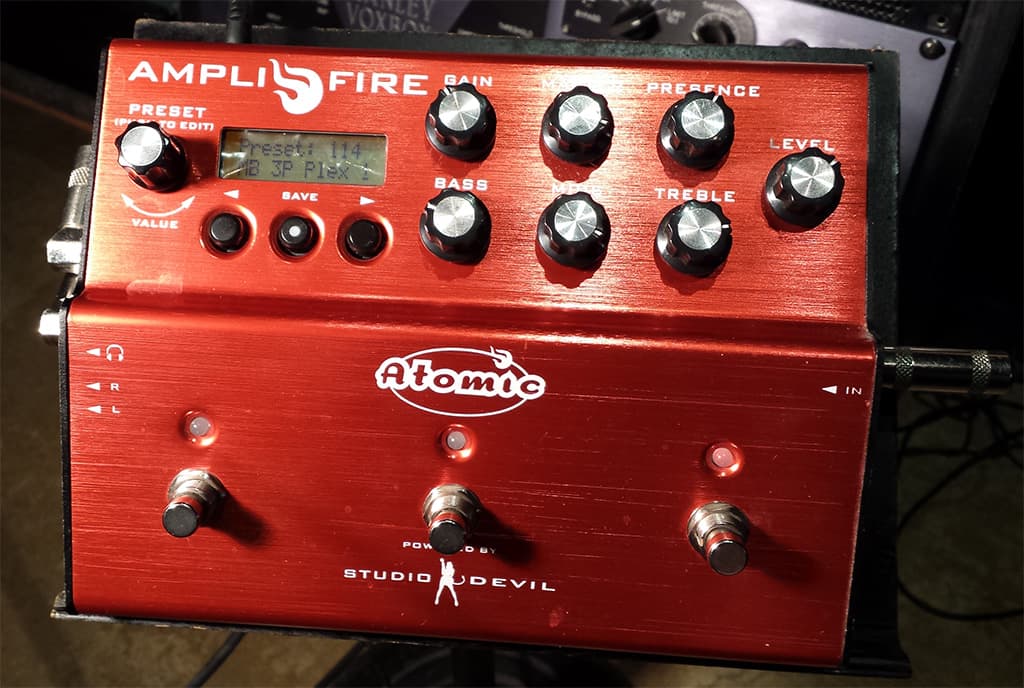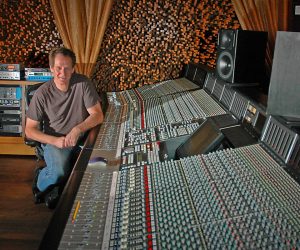
Top 5: Mark Moffatt
We ask studio pros to tell us about their Top 5 most indispensable studio items.
19 October 2021
Text: Joe Matera
Australian producer and engineer Mark Moffatt (The Saints, The Divinyls, Mondo Rock, Tim Finn, Yothu Yindi) has had a legendary career. In 1996 he moved to Nashville where he has continued working with artists such as Keith Urban and others.
SERIES 3 & 4 RAINDIRK VINTAGE MODULES
Raindirk mixing consoles replaced the Helios consoles at the legendary Olympic Studios in London where bands such as Led Zeppelin, The Who, and the Rolling Stones recorded at. They’re not very well known in the US but gearheads know about them through the Helios and Trident connection. Cyril Jones started Raindirk after working at Sound Techniques — precursor to the Trident A range — and also had an association with Dick Swettenham of Helios. I use them primarily on drums and acoustic guitars and they sound warm and woody, I call it ‘’70s London in a Box’. The Series 4 modules have Sowter transformers on mic and line in, while the Series 3 modules have rare Stevens and Billington transformers which I’m sure has a lot to do with the sound, along with Cyril’s very individual design approach. I found the batch of six Series 4 modules on eBay UK back in 2013, no one bid and I got them for $150 shipped! They used almost impossible-to-find ISEP connectors so I modified some similar-sized ones from China which worked fine. These have a very distinctive sound and I’d never part with them. I have used them on everything I’ve done since, including recent albums by Richard Clapton [‘The House Of Orange’] and Brian Cadd [‘Silver City’].


MANLEY VOXBOX
I bought this 15 years ago while I was working on a project with a female artist whose voice was overloading my usual vocal chain. The VoxBox optical compressor works on the voltage straight from the mic before it hits any electronics, which is a great concept: the circuit compresses the voltage from the mic before it hits the preamp — which is why it works so well for vocals. With most other electronics, the microphone will go through the preamp before it gets to the compressor. You can really dial in the dynamic and make it manageable without it squashing anything. The de-esser is also the best I’ve ever used and can also be used as a limiter and sounds very similar to the old Urei 175. The stepped gain knob is more like a control of how much tube sound you are getting, which is very useful on vocals. Its other strength is as a bass DI. Manley claims the EQ is similar to a Pultec and that’s true. I owned an original EQP1A and A/B’d it with the VoxBox and it sounded very close; so close that I sold the Pultec. It occasionally gets used on instruments like Dobro, fiddle and mandolin and really warms up the sound of those instruments.
MXR 136 DUAL LIMITER
I bought one of these back in 1983 when setting up my own 24-track studio and could only afford the MXR as my compressor choice. After using it a while, I discovered it was the most amazing drum compressor and bought a few more used ones, usually around $50 back then. This started a bit of a cult following for them in Sydney and eventually over the years, they have become highly sought after around the world. They use old-school pulse width modulation circuitry like the ’60s Pye and EMI units and as I haven’t found anything else that does what they do. I still use them for drum bus parallel compression.


ROLAND SRV 2000 REVERB
I have a long history with this unit. In the early ’80s AMS reverbs arrived in Australia about six months before they hit the US thanks to a young English distributor who had moved to Australia. I was using mine in the mix room at EMI Sydney when Taro Kakehashi, founder of Roland came into the studio and paid a visit. I had met him before and was a Roland endorsee, hence the visit. He mentioned Roland were making a digital reverb and I said “will it do this?” and dialled up Non Linear 9.9 on the AMS on the snare. The Roland Sydney guys told me he rushed straight back to his hotel and called Japan about this and I was up in Hamamatsu the week later working with the R&D team. They gave me one, which I still have, along with several others and use them as my main drum reverb to this day. They are grainy and sweet at the same time and somehow just really sit naturally with drums in a mix.
ATOMIC AMPLIFIRE
























RESPONSES